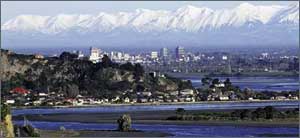Plan Takes Back-To-Basics Approach

The City Council is confident that in putting this plan together staff and elected members have worked hard to find efficiencies and, where possible, offset the effects of increased costs.
The elected members were encouraged by the feedback from ratepayers during the consultation period. While some suggestions have directly impacted on the final version of the plan, many suggestions have been passed to staff to address and will shape Council’s thinking in the future.
While we have been able to provide rate levels over the first three years of this plan below those in the draft, the factors mentioned below, coupled with lower-than-average rate increase since the early 2000s, still culminated in a significant rate increase for 2006/07 and projections for increases for the next few years above those experienced in the past. Rates increases from 2010 to 2016 are forecast to return to more usual levels.
Rates are the main source of funds for the Christchurch City Council to carry out its activities (other funds come from fees and charges, government subsidies, interest and dividends). These activities maintain the day-to-day operations of essential infrastructure and community services in the city, as well as planning and constructing the major capital projects needed to deal with growth.
As Christchurch continues to grow, the Council aims to ensure that adequate infrastructure is provided to support the quality of life that residents expect.
Many of the major infrastructure costs incurred by the Council are essential “business as usual” projects which ensure the city keeps up with basic needs – like maintaining and renewing our roads, parks, water and sewerage networks, or developing the infrastructure for new subdivisions. Business as usual also means absorbing increasing responsibilities resulting from the city growing (maintaining new roads and parks, for instance). Additional to these is the community’s desire for new investments, such as improvements and enhancements to city assets, environmental improvements or the development of new community facilities such as libraries or leisure centres.
Business as usual also includes retaining three service centres – at Akaroa, Little River and Lyttelton – for at least five years. They will provide the same over-the-counter services as those available from the District Council at the time of reorganisation.
There is currently tremendous pressure on costs, particularly in those areas of Council business that relate to the construction industry or that require the use of non-renewable resources. These escalating costs are far beyond cost increases reflected in the consumer price index (CPI) and affect about 40% of the Council’s operating spending. For example, street cleaning costs have increased by nearly $2m a year, which alone equates to a 1% increase in rates.
The Council’s capital programme – the construction and development of major infrastructure projects – have an impact on rates on top of increases arising from normal pressures such as inflation, city growth and increased day-today operating costs. Because of this the Council has redefined how it views capital spending.
Our capital programme includes projects which focus on maintaining public assets at the agreed standard (reviewed by the Council each year). These are primarily renewal and replacement programmes. There are also capital projects which improve existing or create additional assets.
The Council has requested a review of a number of key strategies to determine where it can deliver more, or differently for the same cost. These reviews include parks, open spaces and waterways, major festivals and events, community grants and water conservation. Other reviews may take place to consider how best to deliver housing, water and waste. Any proposals for change relating to these services will be presented to the public as an amendment to the plan or in three years’ time when the next community plan is consulted on and prepared.
While water and waste services are critical for all ratepayers, the capital requirement for them is $499m over the next 10 years. It is worthwhile investigating these services to identify if any improvements can be made. For example other cities have separated their water supply activity into a Council Controlled Trading Organisation.
This long-term council community plan (LTCCP) shows the Council adopting a very much back-to-basics approach to ensure that it can deliver the challenging capital programme that is proposed. Despite cost pressures, the Council will continue to provide an agreed level of service to the community. It is well placed to deliver an ambitious programme for the future while remaining in a strong financial position. |